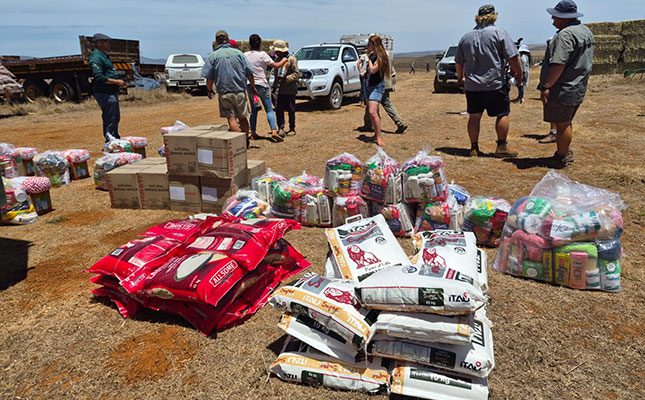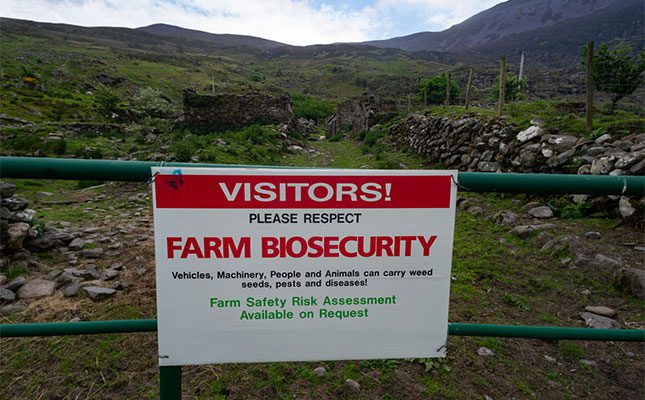
Photo: Jeanne van der Merwe
By choosing to take short cuts in post-harvest on-farm cooling, table grape producers are effectively choosing to compromise the quality of their product upon arrival in export markets.
This warning came from Prof Leila Goedhals-Gerber, head of the Department of Industrial Engineering at Stellenbosch University, speaking at the second annual Packhouse Innovation & Export Summit, held in Stellenbosch on 5 and 6 November.
Her research monitored a number of refrigerated containers (reefers) of table grapes for temperature fluctuations from the time the pallets were loaded into containers to their arrival at retail distribution centres in the UK.
Goedhals-Gerber said it is crucial for any fresh produce to be cooled to the protocol temperature for cold storage as soon as possible after harvest and to remain at that temperature until it reaches the retail space. For table grapes, this temperature is -0,5°C.
Although it is practically impossible to maintain that exact temperature for the 30 to 40 days it takes for a refrigerated container of table grapes to journey from a farm in South Africa to the UK, Goedhals-Gerber and her colleagues established that temperature increases of 2°C or more, and drops of 1,5°C or more lasting longer than 90 minutes, are severe enough to cause significant quality problems.
“Reefer containers are designed to maintain temperature, not to cool fruit down. When you load fruit that is not at protocol temperature [into a reefer container], it will never reach protocol temperature.
“So, by rushing that precooling or cold storage stage, you are making the decision to send fruit that is not going to be at the right quality [upon arrival in the export market],” she explained.
Chokepoints and delays
Goedhals-Gerber said the research found significant risk of quality-destroying temperature spikes during transit from post-harvest cold storage to the reefer stack at the port, and from the reefer stack to loading onto the ship.
“Every transition is a risk point; every time you move that pallet, there is a chance that something could go wrong.”
She added that once a pallet is moved out of cold storage and placed in a staging area, where it awaits loading into a reefer, the risk depends on whether the staging area is indoors or outdoors, and whether it is cooled or not. Opening the reefer doors influences the temperature inside, potentially affecting the fruit quality.
Another critical point is when the reefer reaches the port and waits to be plugged into a power point to run its cooling system. Goedhals-Gerber said that although Transnet has a target of 40 minutes between container arrival and plug-in, the average time it took for the containers in their study to be plugged in was one hour and 52 minutes.
She added that this may be cause for the Perishable Products Export Control Board to revise its recommendation that reefers transported from within two hours of the port can be transported unrefrigerated, as congestion or road accidents could drastically extend the unrefrigerated period.
Hotspots abound
Goedhals-Gerber warned that temperature sensors placed inside reefers to monitor both the ambient and pulp temperatures of grapes showed that cooling was not uniform.
The research found that grapes near the floor of the reefer experienced the smallest temperature fluctuations, while fluctuations increased for fruit in the middle and top of the pallet. Pallets closest to the reefer door, furthest from the cooling unit, warmed the most during the ocean journey.
Where pallets were improperly loaded and touched the reefer walls, the fruit experienced temperature spikes, absorbing heat from the container walls warmed by the sun.
The research also found that ambient air temperature recovered much faster than pulp temperature.
Similarly, Goedhals-Gerber noted that air circulation in cold rooms can make cooling more efficient in some areas than others, so pallets should be positioned in the spots with the best cooling.
Export handling
The research also found that temperature-change risks did not end once table grapes were dispatched.
“We found far more temperature breaks on the international side than we anticipated. This is challenging, because it is outside [exporters’] control,” Goedhals-Gerber said.
She suggested that exporters reduce this risk by including a clause in the export service level agreement requiring the product to remain refrigerated during transport to the distribution centre and retail stores.
Mitigation strategies
To minimise the risk of product damage, Goedhals-Gerber said it was important to make the pre-loading process as efficient as possible.
“Over the past five years, it’s safe to say that are no longer uncommon; they are becoming increasingly common, and blindly believing that it’s not going to happen again is setting everyone up for disaster.
“So, rather put things in place so when something goes wrong, we can do something about it,” she said.
She added that growers should manage the vineyard microclimate and only harvest during the coolest hours of the day. Grapes should also be handled gently and cooled as soon as possible.
“Sorting in the packhouse is very important. Remove decaying berries and those that are of a lower standard as quickly as possible; don’t waste resources moving product that will be rejected anyway,” she explained.
Goedhals-Gerber said it isn’t worth trying to save time or money on pre-cooling and cooling, as any time saved translates to days of shelf life lost once the grapes reach the market.
By packing grapes in such a way to account for the fact that those in the middle and at the top of the pallet are more vulnerable to temperature fluctuations, exporters can also reduce product rejections at destination.
Considering the pressure on the ports, she said industry partners should work together to stagger container arrivals. Peak periods are from 12 pm to 3 pm, which are also the hottest times of the day and when the delay between arrival and plug-in of the reefer could be longest.
She added that the industry needs to emphasise to port authorities the importance of prioritising refrigerated cargo.
Goedhals-Gerber also said exporters should be transparent about supply chain delays to safeguard the trust that importers place in them.












